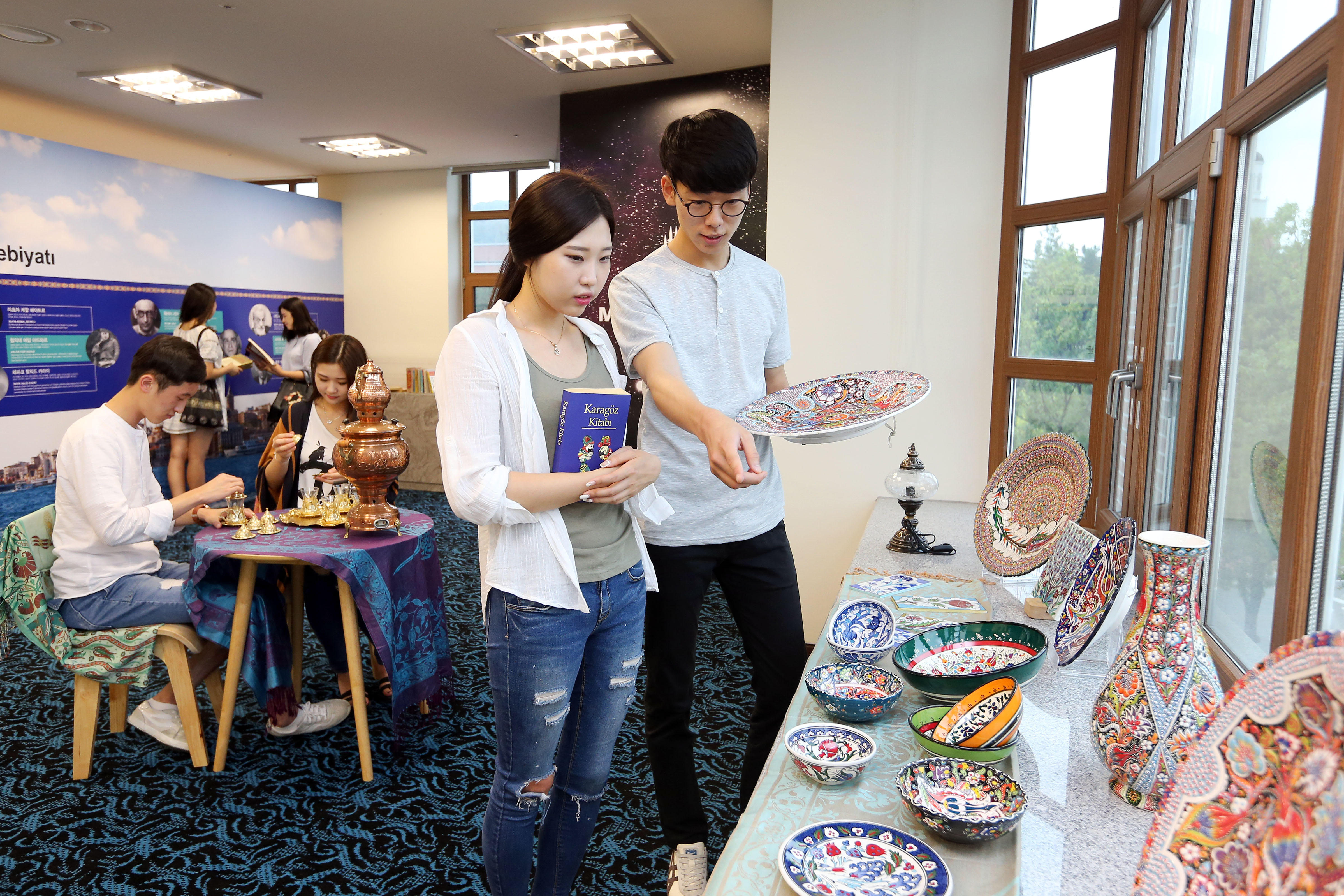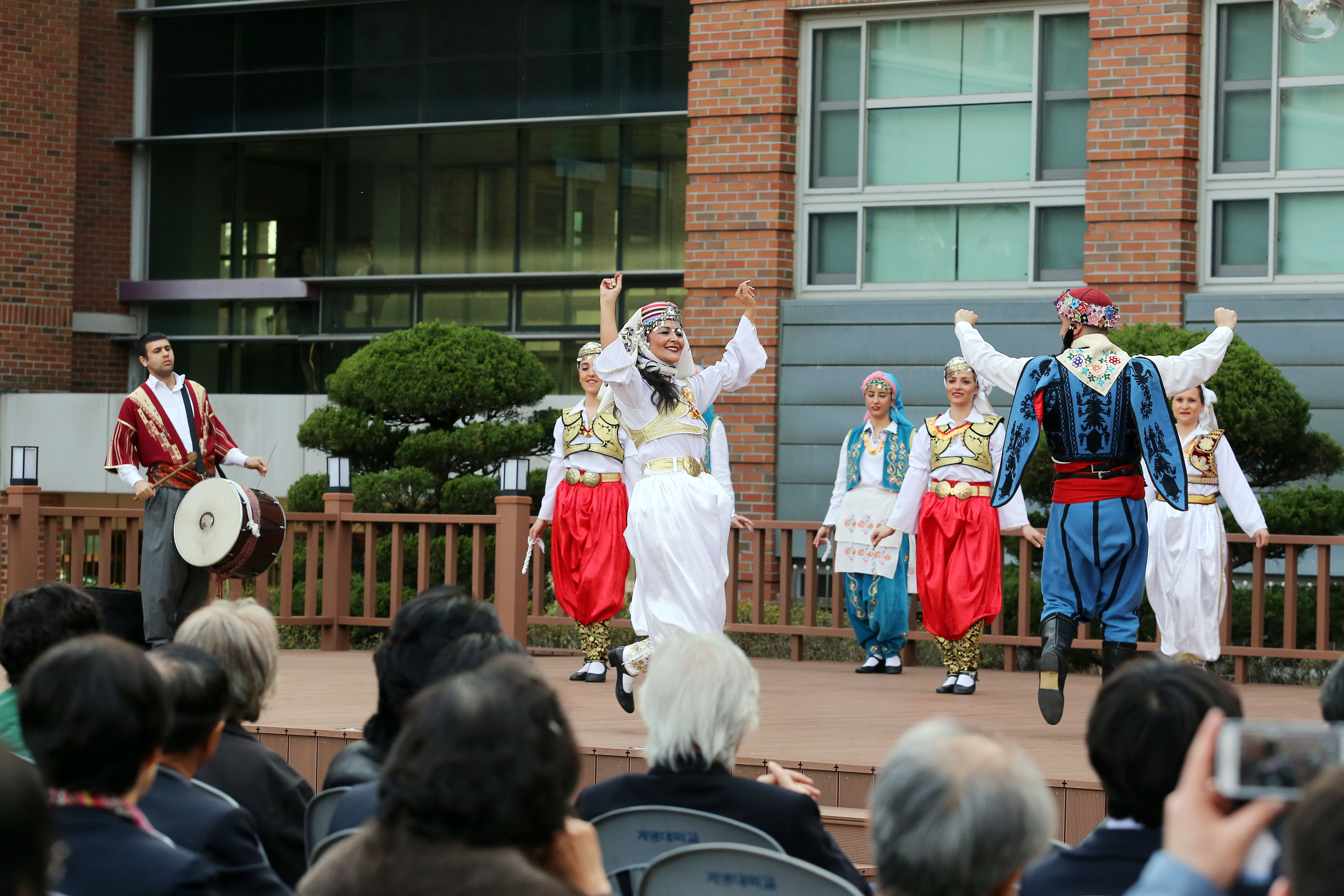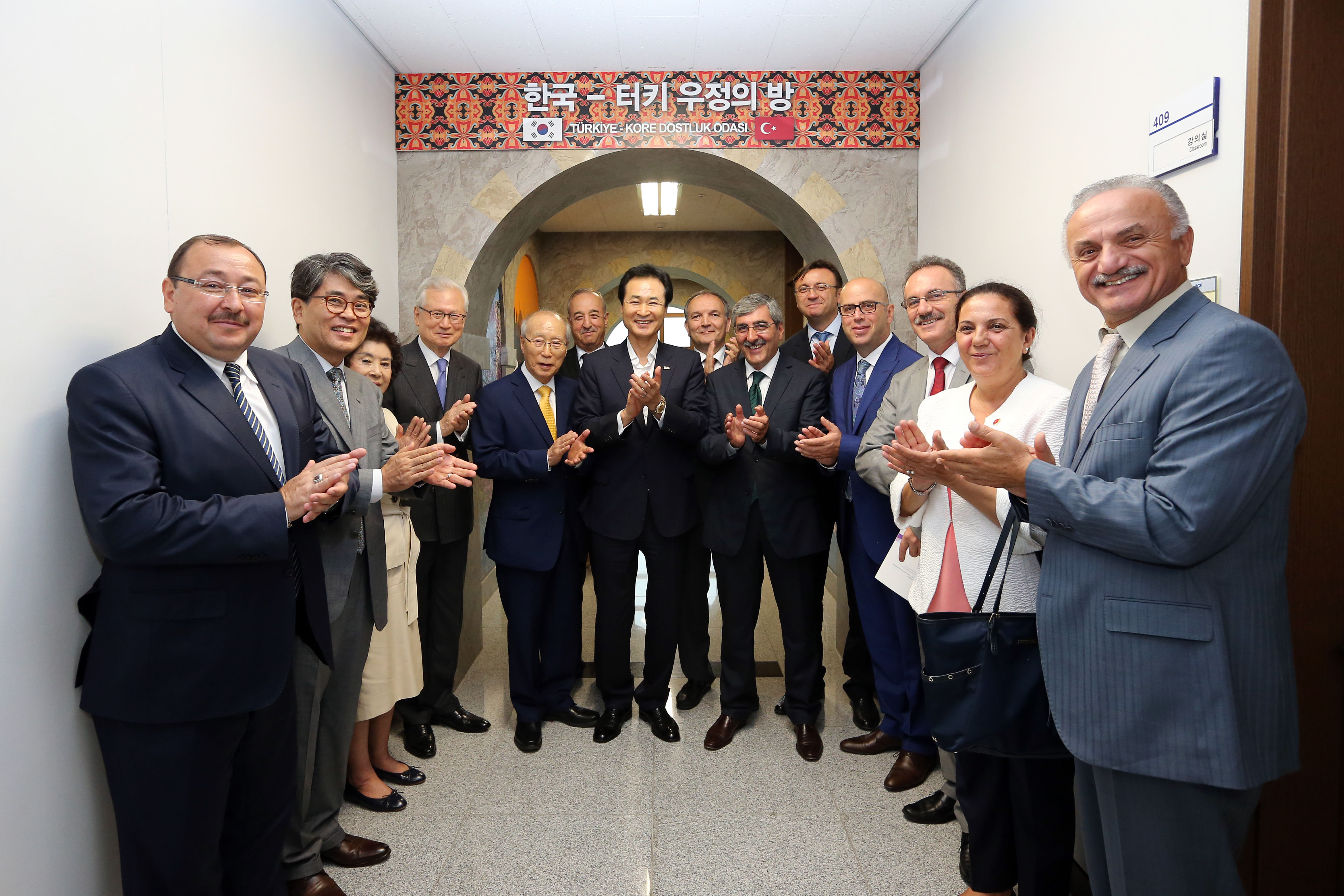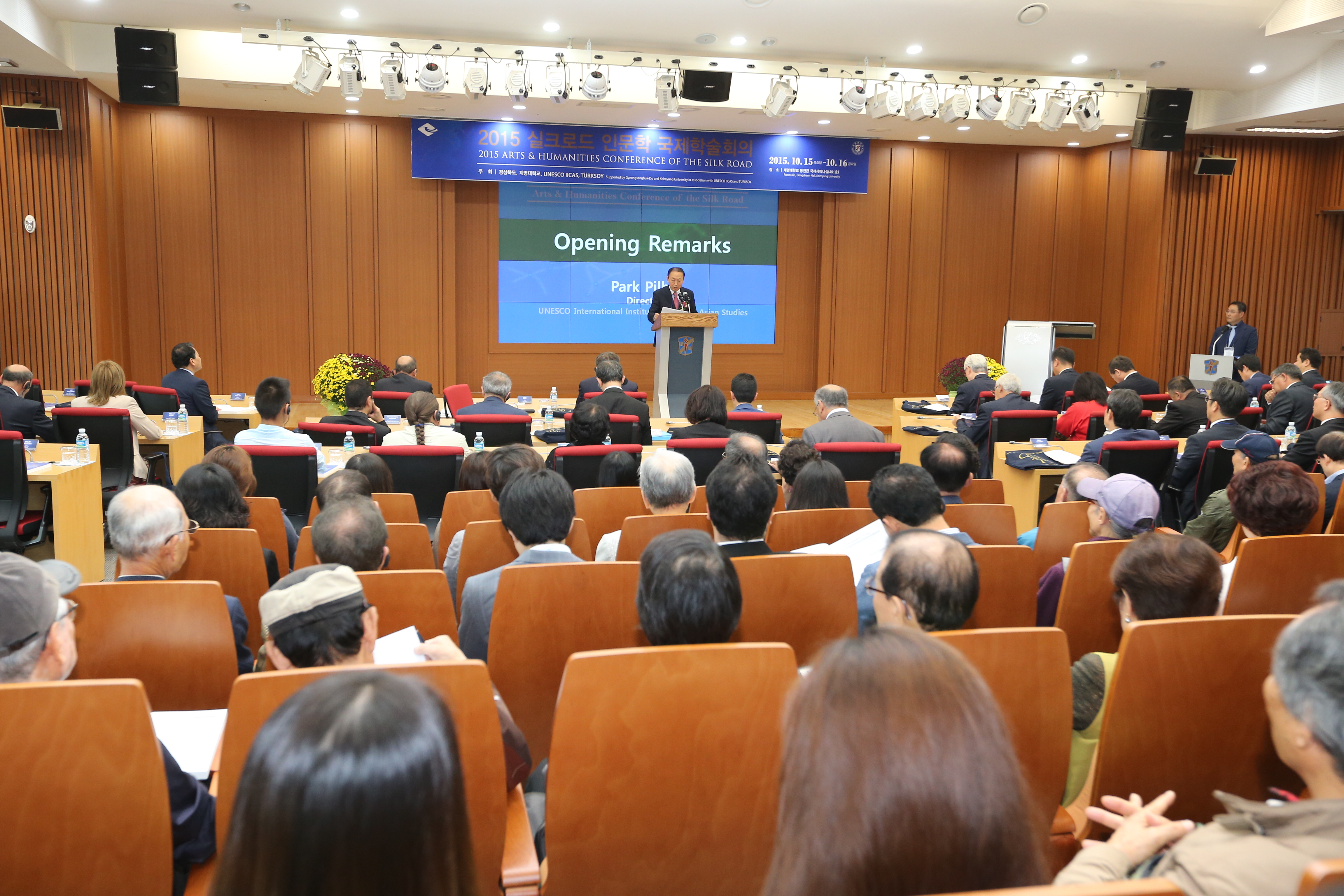
In Central Asia, the Silk Road was a network of trade routes with many different cultures and civilizations. Now, deepening ties between South Korea and Central Asia are well received by both sides which recognize the mutual economic benefits. Central Asian countries are rich in energy and natural resources, so they are fast becoming promising and attractive business markets. In addition, Central Asian countries, in particular Uzbekistan, Kazakhstan, Kyrgyzstan, Tajikistan and Turkmenistan, use their enhanced relations with South Korea to increase their leverage with their powerful neighbors. South Korea’s engagement with Central Asia is based on utilizing a broad range of experiences such as cultural and social interaction. A historical and cultural affinity may also play a sentimental role in South Korea’s interest in developing relations with Central Asia. One reason for Keimyung University’s continued focus on Central Asia's research and exchange agreements may be for the depth of cultural and social ties. In addition, the Center for Silk Road and Central Asia in Keimyung University can play an essential bridging role in enhancing the region’s embrace of a growing role for South Korea.
● Center for Silk Road and Central Asia
For boosting ties with Central Asian countries, Keimyung University has established several centers and programs designed to not only emphasize what to do with development assistance, but to facilitate the sharing to these development experiences. Most recently, the Center for Silk Road and Central Asia (CenSCA) was set up on October 30, 2014, in celebration of Keimyung University’s 115th anniversary. Through these projects, the university has had long lasting relationships with Central Asian countries for the past twenty years. Keimyung University, therefore, has established many active exchanges and programs to attract students around the world to explore the Central Asian countries.

● Nevruz Festival
CenSCA hosts and sponsors many events like festivals, colloquiums and programs. The most typical event is the Nevruz Spring Festival. The word Nevruz is of Persian origin and is a combination of the words ‘nev’ (new) and ‘ruz’ (day), meaning a new day. The Nevruz Festival is a traditional folk festival in all the Central Asian countries in spring. It is the first day of the new year and is a celebration of the arrival of spring every March. Keimyung University declared March 21 as Central Asia Day to boost exchanges between Korea and Central Asian countries. In 2016, the university celebrated the Nevruz Festival for the second time.
On March 19, 2016,Keimyung University presented the Nevruz Spring Festival in its Haedam Hall and Chopin Square. This is the same as the traditional Korean spring festival called Dano. Abdurrahman Shen, Istanbul’s culture and social executive director and Keimyung University adjunct professor, gave a special lecture on Haji Bektash Veli, an Alevi Muslim mystic, and Turkish culture. In addition, there were various booths set up around Chopin Square that showcased traditional Central Asian cultures and gave attendees a chance to experience those cultures by interacting with people from several Central Asian countries.
One of the 2016 festival’s highlights was sure to be the Istanbul Cultural Performance Team's performance. The team plays a crucial role in fostering and enriching the traditional music culture of Turkey. Their first performance was the Alevi ritual sequence called Semah, which is part of Turkey’s Intangible Cultural Heritage. Semah can be described as a set of mystical and aesthetic body movements in rhythmic harmony. They also did an amazing ritual performance called Artesi where they jumped over fire. The Artesi ritual symbolizes joy and happiness for a new day, gets rid of threats and misfortune and allows one to make wishes.
● Events
CenSCA provides programs and events for students and visitors that are educational, entertaining and thought provoking. First, the annual International Conference of Folklore, Art and Music of the Silk Road and Central Asia at Keimyung University was created to increase academic exchanges and strengthen bonds between Korea and major countries along the Silk Road. In the 2015 conference, experts were given the opportunity to present and discuss their views on various aspects of the Silk Road. The plenary session covered an interesting talk about miniatures, folk music, ritual dances and the oral epics of the Silk Road. Participants attended a performance of the traditional Korean court dance, Cheoyongmu, which is on UNESCO’s list of the Intangible Cultural Heritage of Humanity. CenSCA organized various exhibitions and workshops to fulfill the commitment of the university to safeguard the cultural heritage along the Silk Road. Second, the Korean-Turkish Friendship Room in Dongchun Hall Room 408-1 opened on August 22, 2015. KMU has partnered with Turkey to promote understanding of Turkey and to enhance friendship through the implementation of various international exchange programs. With plenty of Turkish books, souvenirs and photos, the room is truly reflective of Turkish culture and the friendship that CenSCA offers. Third, CenSCA Colloquium is a series of talks hosted by CenSCA each semester. During the colloquium, the workshops offer special lectures about Central Asia’s depth of cultural and social research by Central Asia experts. World famous scholars present their papers and exchange views on language, history, culture, art, beliefs and music in the Silk Road countries. CenSCA will be eager to hear from student participants in the colloquium about their experiences with Central Asian cultures.

● 2016 Schedule
CenSCA plans to provide more scholarships and cultural exchange events from this year on. Keimyung University has concluded a Student Exchange Agreement with Istanbul University. Under the bilateral exchange agreement, the university will send eight exchange students in the summer session and two exchange students next semester. Support for the conference is also central to the CenSCA mission. In October, CenSCA will hold "The 2016 Silk Road International Academic Conference on Humanities" with Turkey's Bahcesehir University. In preparation for the conference, the Center will prepare and publish academic journal articles. This year will focus on area studies of Uzbekistan. In addition, it will hold a Turkish lecture on Central Asia’s cultures for students.
● Cooperation and Exchange with Other Institutions
CenSCA develops various events and programs with other institutions. First, CenSCA has signed an MOU with the International Organization of Turkic Culture (TURKSOY).TURKSOY provides opportunities to learn traditional folk music of Central Asia. Second, CenSCA has signed an MOU with Yunus Emre Turkish Cultural Center for the first time in Korea. The center organizes Turkish lessons for students. In addition, this agreement works to promote Turkish language, culture, art and history. Third, CenSCA concluded exchange agreements with Istanbul University, Bahcesehir University, and Esebi University for exchange students and cultural exchanges. Finally, Gyeongsangbuk-do Province has provided a platform to advance scholarship and enhance global awareness of the history and culture of the Silk Road. Therefore, it has promoted the "Silk Road Project" and co-sponsored the academic conference with CenSCA, as well as supporting other CenSCA projects.

Interview with Lee Nan-a, chief of CenSCA's research department
1. What do you do for CenSCA?
I’m the chief of the research department in CenSCA. I’m planning a variety of activities such as the academic conferences, festivals, and publishing.
2. How do you promote CenSCA?
CenSCA has a short history, but it has promoted various activities. The center promotes events and programs through local newspapers and KMU’s web site. In addition, CenSCA will offer a membership program to gather Central Asian students in Keimyung University.
3. Do you have any future plans?
There are not many research projects about Central Asia, but it is worth researching. CenSCA wants to develop Central Asia research experts and be the leading academic source for future generations. CenSCA can also help a community's development.
4. Do you have any advice for the Gazette readers?
First, I want to recommend a Turkish lecture for students. It will help them understand Central Asia’s culture and art, not merely learning Turkish. In addition, I hope they will participate in a variety of events that will help them become familiar with and embrace Central Asian cultures.
The Center for Silk Road and Central Asia provides diverse educational programming and serves as a resource center for Central Asia's cultures. The Gazette recommends you join the fascinating events of the Center for Silk Road and Central Asia.
